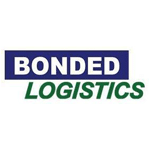The Essential Guide to WMS ERP Integration
Unlock the potential of your business with our comprehensive guide to WMS ERP integration.
In today’s fast-paced business world, the integration of Warehouse Management System (WMS) and Enterprise Resource Planning (ERP) systems is becoming increasingly vital for companies that strive to optimize their operations and stay competitive. This essential guide will provide you with a comprehensive understanding of WMS ERP integration, its importance, key components, steps to successful implementation, and how to overcome challenges along the way.
Understanding WMS and ERP Systems
Before diving into the intricacies of WMS ERP integration, it’s essential to grasp the definitions and functionalities of both systems.
Defining WMS: An Overview
A Warehouse Management System (WMS) is a critical component in the logistics and supply chain industry. It is a software application designed to manage and control various warehouse operations smoothly. A WMS encompasses processes such as inventory management, order fulfillment, receiving goods, put-away, picking, packing, and shipping. By utilizing a WMS, businesses can enhance their operational efficiency, reduce errors, and improve customer satisfaction through timely and accurate order processing.
Using a WMS enables businesses to efficiently organize their inventory, optimize space utilization, streamline order processing, and enhance overall warehouse productivity. With features like real-time inventory tracking, automated workflows, and performance analytics, a WMS empowers organizations to make data-driven decisions and adapt to changing market demands swiftly.
Understanding ERP Systems
When it comes to Enterprise Resource Planning (ERP) systems, they serve as the backbone of many modern businesses. ERP systems are comprehensive software platforms that integrate various business functions and processes into one unified system. These functions often include financial management, human resources, customer relationship management, supply chain management, manufacturing, and more. By consolidating all these functions into a single system, ERP software can eliminate data silos, improve collaboration, and provide a holistic view of the organization’s operations.
ERP software provides a centralized database for all essential business data, offering seamless information flow across departments and facilitating real-time decision-making processes. With modules tailored to specific business needs, ERP systems enable organizations to standardize processes, increase efficiency, and drive growth. By leveraging ERP systems, companies can streamline operations, reduce costs, and gain a competitive edge in today’s dynamic business landscape.

The Importance of WMS ERP Integration
Now that we have a clear understanding of WMS and ERP systems, let’s explore why their integration is crucial for businesses.
Warehouse Management Systems and Enterprise Resource Planning systems are essential tools for modern businesses looking to optimize their operations and enhance efficiency. When these two systems are seamlessly integrated, the benefits are manifold, revolutionizing the way organizations manage their supply chains and streamline their processes.
Streamlining Business Processes
When WMS and ERP systems are integrated, organizations can streamline their warehouse and overall business processes. This integration eliminates redundant data entry tasks and minimizes manual errors, as information is seamlessly shared between the systems.
Automated workflows accelerate order processing, reduce lead times, and improve overall efficiency, enabling companies to meet customer demands promptly.
Moreover, the integration of WMS and ERP systems enables better collaboration between different departments within an organization. By breaking down silos and fostering cross-functional communication, businesses can enhance decision-making processes and drive greater operational synergy.
Enhancing Data Visibility and Accuracy
Integrating WMS with ERP ensures real-time visibility into warehouse operations and inventory levels. This visibility allows businesses to respond quickly to changes in demand, ensuring that the right products are available at the right time.
Accurate and up-to-date data enables more accurate demand forecasting, efficient inventory management, and reduces the risk of stockouts or overstocking situations.
Furthermore, the integration of WMS and ERP systems opens up opportunities for advanced analytics and business intelligence. By harnessing the power of data analytics, organizations can gain valuable insights into their operations, identify trends, and make data-driven decisions that propel business growth and competitiveness.
Key Components of WMS ERP Integration
Successful WMS ERP integration requires a thorough understanding of the key components involved. Let’s explore these components in detail.
Inventory Management
Inventory management plays a vital role in the integration process. The WMS and ERP systems must be able to communicate seamlessly to provide accurate and real-time inventory information. This includes receiving inventory, tracking stock levels, and updating inventory records across both systems.
However, it’s not just about the data exchange. An integrated approach ensures that inventory data is accurate, enabling organizations to make informed decisions about stock replenishment and optimization. With real-time visibility into inventory levels, businesses can avoid stockouts, reduce carrying costs, and improve overall supply chain efficiency.
Order Processing
Effective order processing relies on seamless communication between WMS and ERP systems. When integrated, organizations can automatically transfer order information from ERP to WMS, allowing for efficient order fulfillment and accurate order tracking.
Imagine a scenario where a customer places an order on your e-commerce platform. With WMS ERP integration, the order details are automatically transferred to the WMS system, triggering the picking and packing process in the warehouse. Real-time order status updates and automated order picking processes contribute to faster order processing and improved customer satisfaction.
Shipping and Delivery Management
Integration of shipping and delivery management processes allows for seamless coordination between front-end order management and back-end warehouse operations. This integration enables organizations to generate shipping labels, track deliveries, and update order status in real-time.
Picture this: a customer eagerly awaits their package. With WMS ERP integration, the shipping label is generated automatically, and the order status is updated in real-time as the package moves through the fulfillment process. Efficient shipping and delivery management contribute to improved supply chain visibility, reduced shipping errors, and enhanced customer service.
As you can see, WMS ERP integration is a game-changer for businesses looking to optimize their operations. By leveraging the key components of inventory management, order processing, and shipping and delivery management, organizations can achieve greater efficiency, accuracy, and customer satisfaction.

Technological Considerations for WMS ERP Integration
Successful integration of WMS and ERP systems relies heavily on the right technological infrastructure. Application Programming Interfaces (APIs) and middleware play crucial roles in this process:
APIs:
APIs facilitate direct communication between the WMS and ERP systems. They enable various software components to interact seamlessly, allowing for real-time data exchange and synchronization. By using APIs, businesses can ensure that data flows smoothly between the systems, enhancing functionality and reducing the likelihood of errors.
Middleware:
Middleware acts as a bridge between WMS and ERP systems, especially when direct integration poses challenges. It helps manage and translate data between disparate systems, ensuring that both systems can understand and use the information effectively. Middleware solutions can also provide additional security measures, data management tools, and connectivity options.
At Cadre Technologies, our products are designed to integrate effortlessly with a wide range of systems. Leveraging advanced APIs and robust middleware solutions, Cadre Technologies ensures that our WMS seamlessly connects with ERP systems, enhancing our clients’ ability to scale operations and adapt to market changes efficiently.
By leveraging these technologies, companies can overcome common integration challenges, enabling a more flexible and scalable IT infrastructure. This prepares businesses to adapt to evolving technological landscapes and meet future needs efficiently.
Steps to Successful WMS ERP Integration
To ensure a successful WMS ERP integration, organizations should follow a well-defined set of steps. Let’s explore these steps in detail.
Integration of Warehouse Management Systems and Enterprise Resource Planning systems is a complex process that requires careful planning and execution. By following the steps outlined below, organizations can streamline their integration efforts and maximize the benefits of a unified system.
Planning and Analysis
Prior to integration, organizations must conduct a detailed analysis of their existing systems and processes. This analysis helps identify gaps, define integration requirements, and establish clear goals and objectives for the integration process.
During this phase, it is important to involve key stakeholders from different departments to ensure a comprehensive understanding of the organization’s needs. By gathering input from IT, warehouse personnel, and key business users, organizations can align their integration strategy with the specific requirements of each department.
Thorough planning and a well-defined roadmap are crucial to ensure a smooth integration process and avoid potential pitfalls. By outlining the scope of the integration, setting realistic timelines, and allocating resources effectively, organizations can minimize disruptions and achieve a successful integration.
System Configuration and Customization
After the planning phase, organizations need to configure their WMS and ERP systems to align with the integration requirements. This may involve mapping data fields, establishing data synchronization mechanisms, and configuring integration middleware if required.
Additionally, customization of the systems may be necessary to accommodate specific business processes or industry requirements. This could include creating custom workflows, defining user roles and permissions, or implementing industry-specific modules.
During this phase, organizations should also consider data cleansing and data migration activities to ensure the accuracy and integrity of the data being transferred between systems. By investing time and effort in data quality, organizations can avoid issues such as duplicate records or incomplete data sets.
Testing and Deployment
Prior to going live, thorough testing of the integration is essential to identify and rectify any potential issues or errors. This testing should encompass end-to-end scenarios and involve all relevant stakeholders, including IT, warehouse personnel, and key business users.
Organizations should create comprehensive test cases that cover various integration scenarios, including data synchronization, order processing, and inventory management. By simulating real-world scenarios and conducting rigorous testing, organizations can ensure that the integration performs as expected and meets the defined requirements.
Once testing is completed successfully, the integration can be deployed and closely monitored in the initial stages to ensure its smooth operation. Organizations should establish monitoring mechanisms to track system performance, identify any performance bottlenecks, and address them promptly.
It is important to note that integration is an ongoing process, and organizations should continuously evaluate and optimize their integration strategy to adapt to changing business needs and technological advancements.

Overcoming Challenges in WMS ERP Integration
While WMS ERP integration brings significant benefits, it may also present challenges that need to be addressed for a successful implementation.
Data Migration Issues
Migrating data from existing systems to the integrated WMS and ERP environment can be complex and time-consuming. It’s crucial to ensure accurate data migration, avoiding data loss or corruption during the process.
Thorough data validation and verification processes should be put in place to ensure data integrity in the new integrated system.
Training and Change Management
The successful adoption of integrated WMS ERP systems requires proper training and change management processes. Employees need to be trained on the new system’s features, functionalities, and workflows to maximize its benefits.
Change management strategies should be implemented to address any resistance to change, promote user adoption, and ensure a smooth transition to the integrated environment.
System Compatibility Concerns
Compatibility issues between WMS and ERP systems can arise during integration. It’s crucial to ensure that the systems are compatible in terms of data formats, communication protocols, and system requirements.
Close collaboration between the IT teams responsible for each system is necessary to identify and resolve any compatibility challenges.
Streamline Your Operations with Cadre Technologies WMS ERP Integration
Cadre Technologies offers advanced integration with top ERP systems like Microsoft Dynamics, QuickBooks, Sage, and NetSuite, ensuring seamless connectivity between your warehouse management and accounting software. Our solution enhances operational efficiency with key features:
- Effortless Integration: Seamlessly connect with almost any ERP system, enhancing both financial management and operational efficiency.
- Real-Time Data Synchronization: Keep your inventory and financial data aligned with real-time updates, reducing discrepancies and enabling better decision-making.
- Scalable Solutions: As your business grows, our integration adapts, ensuring you can handle increased demands without sacrificing performance.
Experience how Cadre Technologies can optimize your operations. Request a demo today and see the difference in real-time.
Conclusion
By understanding the importance of WMS ERP integration, recognizing key components, following a well-defined integration process, and proactively addressing potential challenges, organizations can streamline their operations, optimize efficiency, and gain a competitive edge in today’s rapidly evolving business landscape. Embracing WMS ERP integration allows companies to achieve true synergy between their warehouse and overall business processes, maximizing productivity, customer satisfaction, and ultimately, their bottom line.
Take Action with Cadre Technologies
Are you ready to leverage the full potential of WMS ERP integration? Cadre Technologies provides robust, seamlessly integrable WMS solutions that support and enhance ERP systems, fostering improved operational efficiency and strategic growth. Explore how our advanced technology can make a significant difference in your business operations. Contact us today for a personalized demonstration and see first-hand how our WMS ERP integration can revolutionize your business operations. Request a demo and start your journey towards optimized efficiency.









